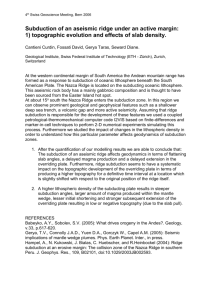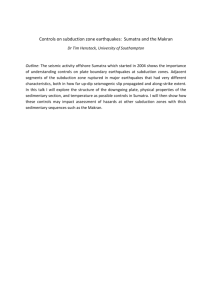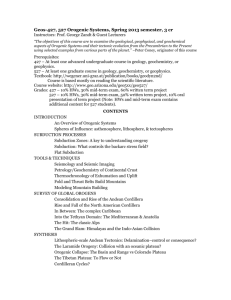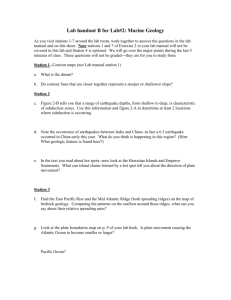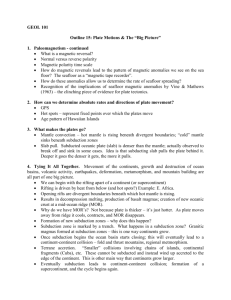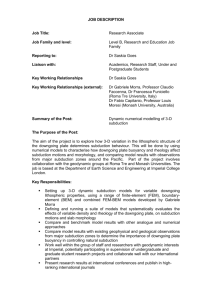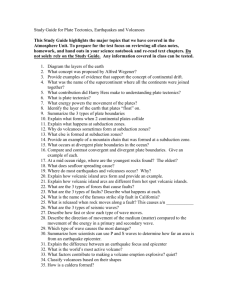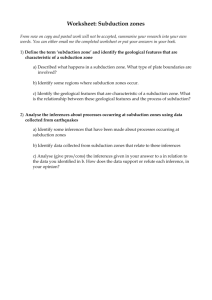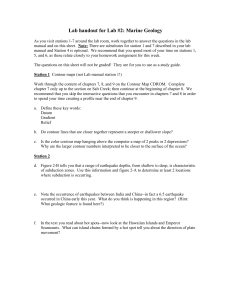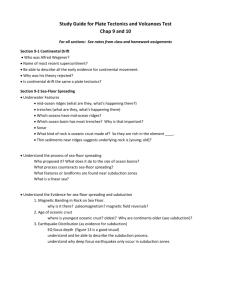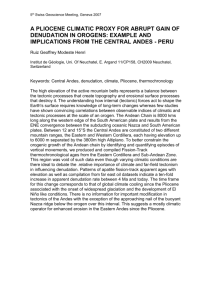The Andes (Windley)
advertisement
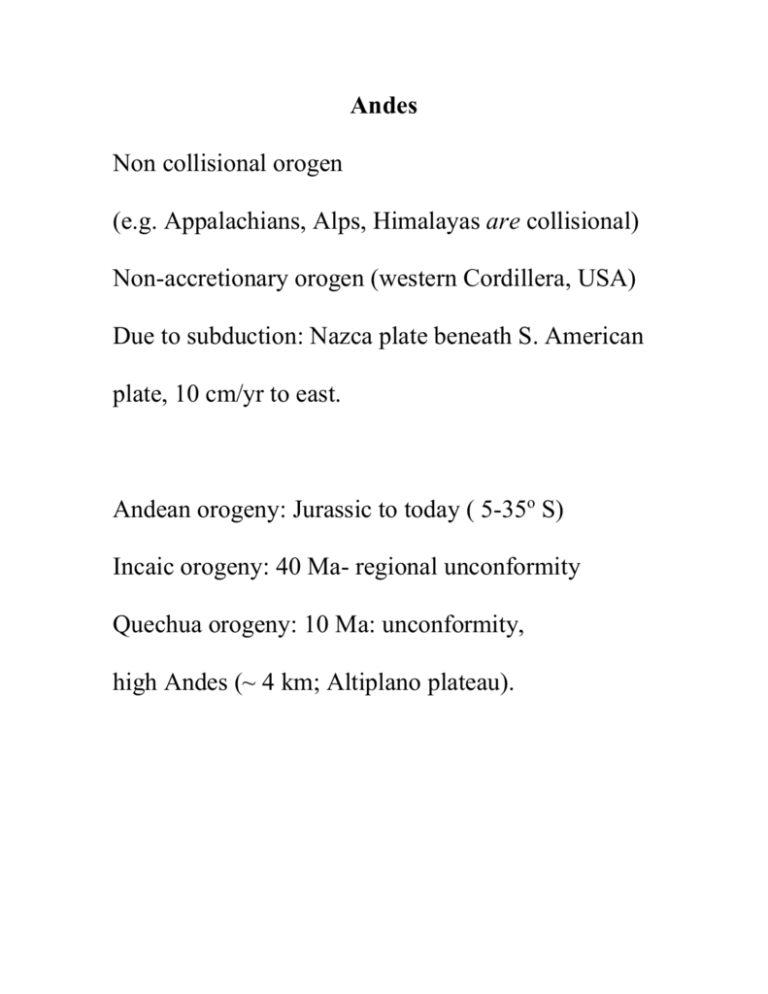
Andes Non collisional orogen (e.g. Appalachians, Alps, Himalayas are collisional) Non-accretionary orogen (western Cordillera, USA) Due to subduction: Nazca plate beneath S. American plate, 10 cm/yr to east. Andean orogeny: Jurassic to today ( 5-35o S) Incaic orogeny: 40 Ma- regional unconformity Quechua orogeny: 10 Ma: unconformity, high Andes (~ 4 km; Altiplano plateau). Plate boundary divided into segments with flat and steep dips subduction dip. Shallow subduction related to attempted subduction of buoyant aseismic ridges (Juan Fernandez, Nazca ridge) (do not confuse with seismic Chile ridge) 1. Columbia (north of 2oS) High angle subduction 25 Ma – today 2) Peru (2 – 15 oS) Shallow Benioff zone High uplift rates Large earthquakes Foreland basin Eastward thrusting Coastal batholith (188 – 37 Ma) – continues south where steep subduction occurs. 1000 plutons, gabbro, tonalite, granite increase in Sr, Ce/Yb, Ta/Hf eastward enriched mantle source 3) Central Andes: S. Peru- Chile (15 – 27 oS) steep (30 deg.) dip subduction Western Cordillera: Mesozoic-Tertiary batholiths West vergent thrust belt Eastern Cordillera: East vergent fold-thrust belt (thin skinned) onto Brasilian shield Between two cordillera is Altiplano (~ 4 km) Intermontane basins Crust 70 km thick Uplift rates 1 mm/yr (Himalayas ~ 5mm/yr) 4) Andes in Chile (27 – 33 oS) Shallow subduction No volcanism today Thick skinned thrusting (Sierra Pampeanas) Andesite - rhyolite 5) South of 45oS Chile Ridge currently subducted at 9 cm/yr north of triple junction, 2 cm/yr south of triple junction. Triple junction migrating north started 15-20 Ma ago Chile Ridge: Nazca S. American Plate 9 cm TJ 2 cm Antarctic plate Ophiolite: Taitao Peninsula: emplaced 3-4 Ma No accreted terranes in central Andes Arc-related terranes further south (Windley) Lamb and Davis (Nature, 2003) Climate effect on tectonics (contrast with tectonic effects on climate) 10 – 33oS: Trench starved of sediment (< 500 m) Climate arid onshore-low rainfall/low erosion Low sediment produces high friction Subduction zone is high stress (> 35 MPa) High stress produces high Andes (~ 4km) In contrast north of 10 S and south of 33 S: Sediment in trench 1 – 2.5 km thick High rainfall/high erosion rate Low friction in subduction zone due to weak sediments Low stress in subduction zone < 35 MPa Adjacent Andes ~ 1km altitude Conclusion: climate controls tectonic elevation of Andes Andes famous for Sn, Cu-Porphry ore deposits – subduction related.
